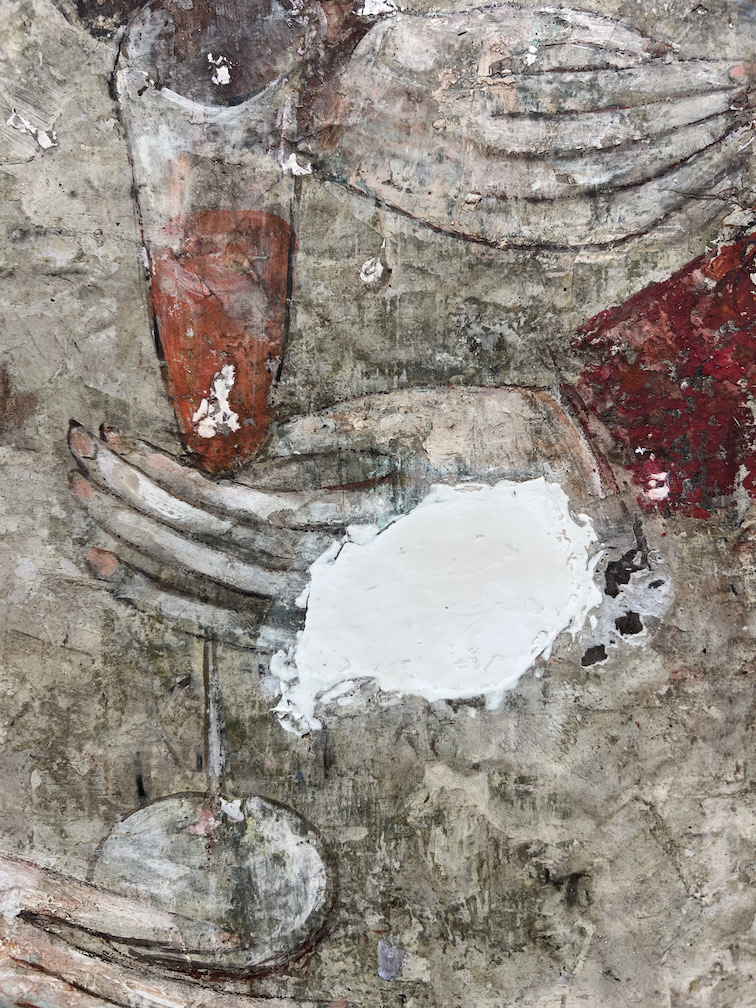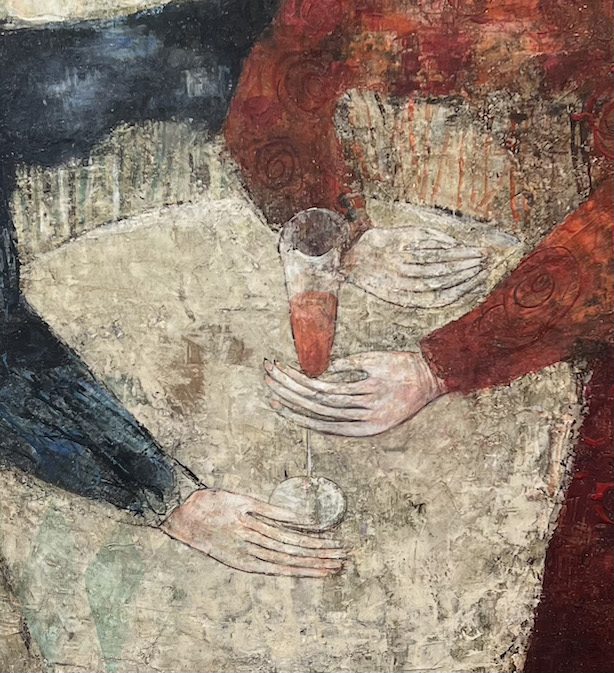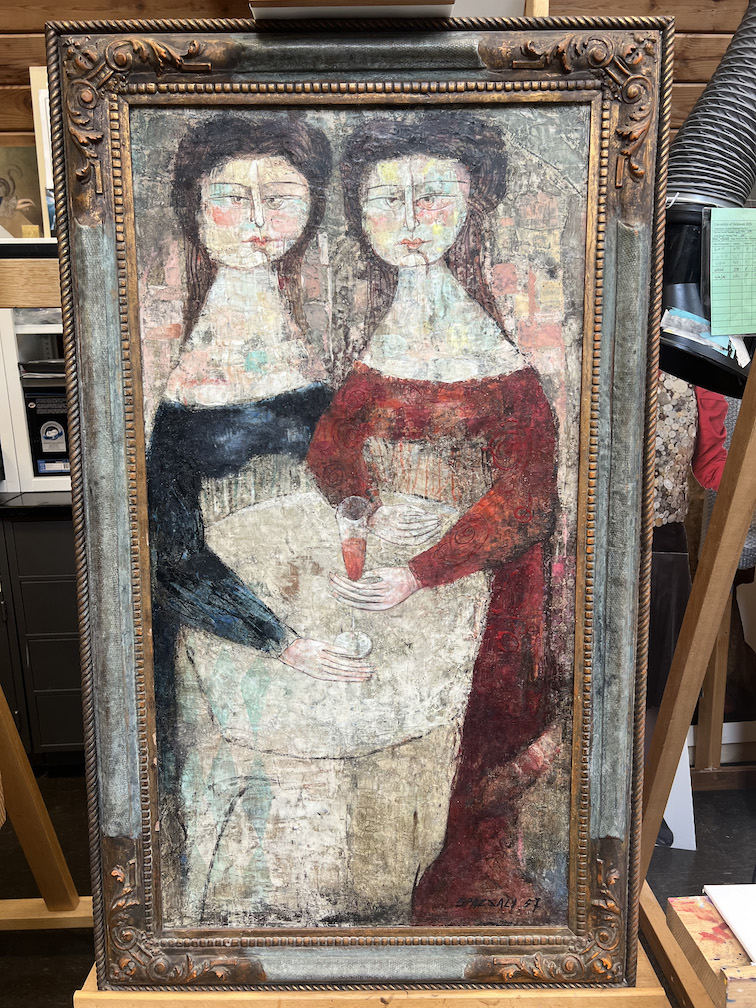
Category: Art Conservation
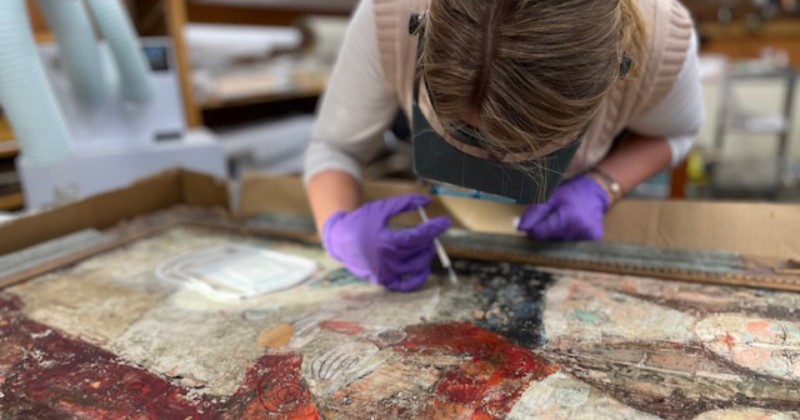
Student Blog: UD Summer Scholars Program
August 21, 2025 Written by Madison Griffin
In October of 2024 while participating in a paintings conservation internship at the Winterthur Museum and Gardens under Dr. Joyce Hill Stoner, I started the treatment of a 1957 Italian painting by the artist Luciano Spazzali. The painting was in poor condition, with large areas of loss and “potato chips” of paint lifting from the ground layer of the painting and the particle board support. The initial photography, condition report, treatment proposal and first steps to consolidate the curled paint chips were carried out by second-year graduate students of the Winterthur/University of Delaware program: Zoe Avery, Taryn Nurse, and Tatiana Shannon. Following the treatment process they established, I spent the remainder of the fall semester and subsequent spring semester consolidating the rampantly flaking paint.

Thanks to the UD Summer Scholars Program, I was lucky enough to be able to continue and ultimately complete this project over the summer of 2025. By the end of the previous spring semester, I had completed the consolidation and fully stabilized the paint surface allowing it to be displayed upright on an easel. My focus over the summer was to tackle the large losses peppering the entire surface. I did this by applying acrylic spackle in each of the losses and then leveling them to match the surface texture of the original paint. I next used Golden PVA conservation paints to retouch each of the losses and reintegrate them back into the composition. The largest area of inpainting and probably the most daunting part of this entire treatment was the three by two-inch loss in the hand in the center of the composition. It required me to reconstruct the majority of the hand, imitating both brushstrokes and contour lines to seamlessly assimilate the inpainted area into the overall image so it would not be noticed as non-original but is clearly visible under examination with ultraviolet light.
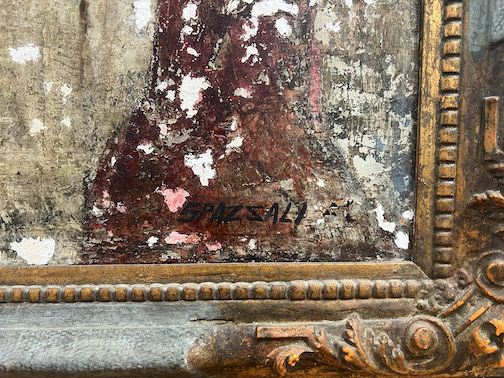
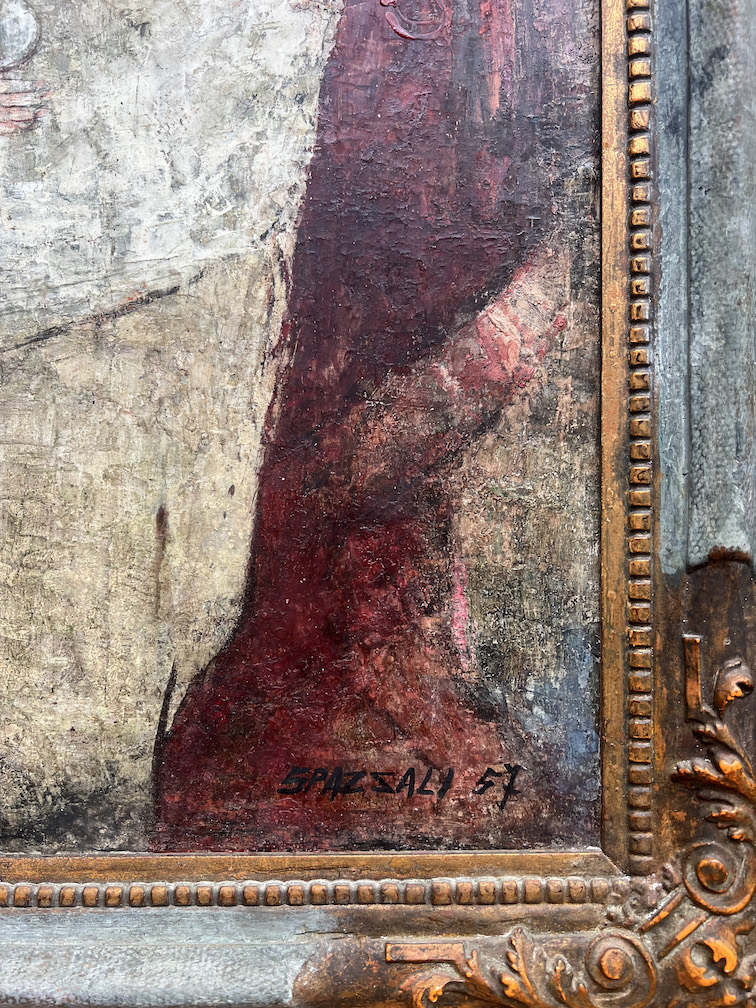
This treatment was incredibly rewarding and frustrating at the same time. It required a great deal of patience and problem-solving skills; I was encouraged to question the reasoning behind every step of the treatment and remain open to more unconventional methods due to the complexities of the paint. It was an honor to be given the opportunity to work on such a complex project as an undergraduate student; everything about this treatment was completely new to me, this being my first real treatment on an actual painting. I learned so much that I can carry into all my future work, and overall I am very proud of my work and the end results.
Just briefly, I would like to mention a few other experiences I got to be a part of thanks to the Summer Scholars Program and Dr. Joyce Hill Stoner. I was able to improve upon my public speaking skills and ability to articulate my work to an audience through my participation in hosting tours of the conservation labs at Winterthur. I also had the opportunity to visit some of the other labs in the museum, namely the objects lab to learn what types of projects they were working on for Winterthur. One of note was a small shellwork cabinet that Lara Kaplan was treating over the summer. We also visited the private practice studio of Kristin deGhetaldi, and she explained the ins and outs of private work in the Delaware area as well as projects she was working on.
- Madison Griffin, UD Class of 2027 art conservation major with minors in history, chemistry, fine arts, and museum studies; Class of 2027 World Scholar
You can learn more about the 2025 Summer Scholars Program on UD’s Undergraduate Research Program webpage.
